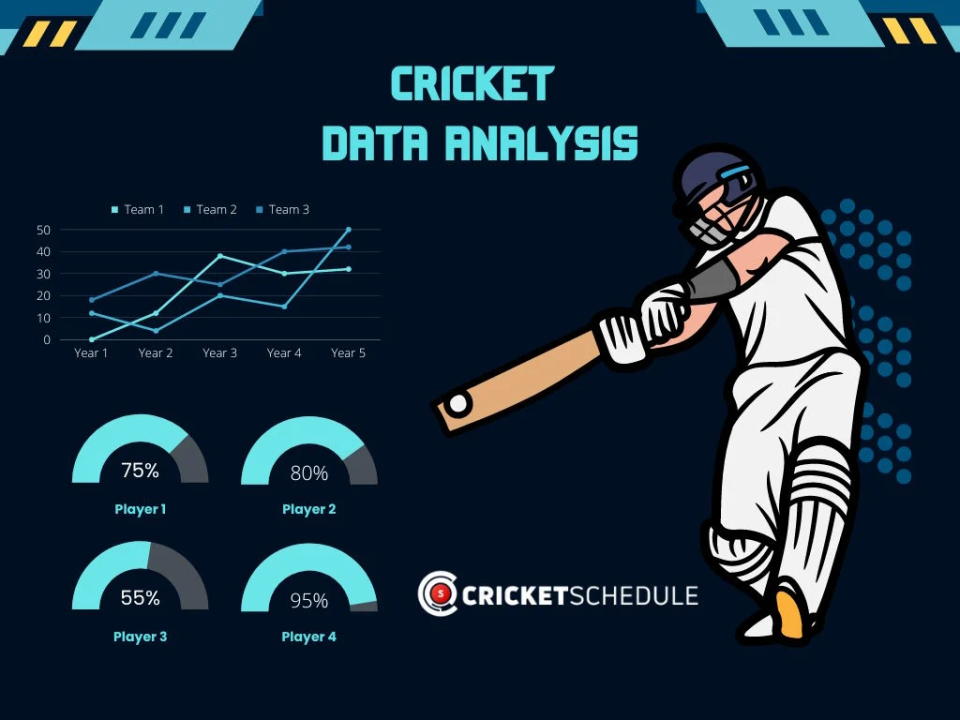Cricket Performance Analytics is revolutionizing how cricketers train, play, and achieve success. With the sport evolving rapidly, professional coaches and teams increasingly rely on data to make informed decisions about player performance, strategy, and fitness. These analytics offer a comprehensive view of a player’s strengths and weaknesses, helping them make consistent improvements in batting, bowling, and fielding.
Modern cricket in India, including domestic tournaments like the Ranji Trophy and high-profile leagues like the IPL, emphasizes precision and preparation. Teams now integrate Cricket Performance Analytics into daily practice sessions, enabling players to understand their performance patterns and adapt strategies accordingly.
Understanding Cricket Performance Analytics
At its core, Cricket Performance Analytics involves collecting, analyzing, and interpreting data from matches and training sessions. This includes metrics such as batting strike rates, bowling accuracy, fielding efficiency, and even physiological indicators like heart rate and fatigue levels. By analyzing this data, coaches and players gain insights that were previously based purely on observation.
For example, data analysis can reveal a batsman’s preferred scoring zones, weaknesses against specific deliveries, or consistency in various match situations. Similarly, bowlers can track line, length, and spin effectiveness, allowing them to adjust their techniques for better results.
Batting Analytics: Enhancing Technique and Strategy
Cricket Performance Analytics provides a significant advantage in batting. Coaches use ball-by-ball tracking and video analysis to identify patterns in a player’s technique. Metrics such as foot movement, shot selection, and timing are analyzed to maximize scoring potential while minimizing risk.
Professional players like Virat Kohli and Shubman Gill utilize data analytics to refine their batting strategies against different opponents. For young cricketers in academies, adopting similar practices allows them to understand how to position themselves, when to play aggressively, and when to defend, ultimately improving consistency at the crease.
Bowling Analytics: Precision and Variation
For bowlers, Cricket Performance Analytics emphasizes accuracy, consistency, and tactical variation. Data on delivery speed, swing, seam movement, and spin provides actionable insights for refining skills. By studying opponent batsmen’s weaknesses, bowlers can design strategies to increase wicket-taking opportunities.
Elite cricket academies in India leverage analytics to simulate match scenarios, helping bowlers practice variations and field placements. Players gain a better understanding of when to use slower balls, yorkers, or bouncers, optimizing their impact during games.
Fielding Analytics: Boosting Reaction and Efficiency
Fielding is a crucial area where Cricket Performance Analytics has created measurable improvements. Tracking player movement, reaction times, and catching efficiency enables coaches to provide targeted training. Analytics help identify areas where fielders lose time or misjudge ball trajectories, allowing for focused drills that enhance agility and precision.
T20 cricket in particular rewards teams with agile, data-informed fielding units. By integrating analytics into training, players develop the instincts and speed necessary to save boundaries, execute run-outs, and make game-changing catches.
Fitness and Injury Prevention
Cricket Performance Analytics is not limited to on-field performance. Modern analytics also track physiological data such as heart rate, fatigue, and muscle load. By monitoring these metrics, coaches can design fitness programs that reduce injury risks and enhance endurance. Players with strong fitness data profiles perform more consistently across long tournaments, maintaining focus and energy levels during critical moments.
Data-driven fitness regimens have helped IPL and national-level players maintain peak performance while reducing downtime due to injuries, highlighting the growing importance of integrating analytics with physical conditioning.
Technology in Cricket Analytics
Technological advancements play a key role in Cricket Performance Analytics. Tools like Hawk-Eye, CricViz, and wearable trackers provide precise metrics that were previously unavailable. Motion capture and video analysis allow coaches to break down every aspect of a player’s technique, from bat swing to bowling arm angle.
Teams use these insights to plan strategies against opponents, tailor individual player development, and optimize practice sessions. Young players in India’s cricket academies increasingly benefit from these technological tools, learning skills faster and more effectively than traditional methods allow.
Mental and Tactical Insights
A lesser-known aspect of Cricket Performance Analytics is its ability to enhance mental and tactical preparation. Analytics provide insights into situational performance, such as how a batsman reacts to high-pressure overs or how bowlers adapt to different pitch conditions. By understanding these trends, coaches train players to make better split-second decisions during matches.
This data-driven approach fosters strategic thinking, helping players anticipate opponent behavior and execute plans that increase their chances of success.
Implementing Analytics in Daily Training
Incorporating Cricket Performance Analytics into daily training routines ensures consistent improvement. Coaches encourage players to review performance dashboards after every match or practice session. Identifying strengths and weaknesses allows players to focus on targeted skill development.
Academies often combine analytics with traditional coaching, using drills and simulations based on data insights. This holistic approach ensures that players develop both technical proficiency and a deeper understanding of match dynamics.
Real-Life Impact on Player Growth
Several domestic and IPL players in India have leveraged Cricket Performance Analytics to refine their game. By systematically tracking metrics and adapting techniques, players have achieved measurable improvements in batting averages, bowling economy, and fielding efficiency. These improvements translate to better match outcomes and enhanced career prospects.
Analytical coaching ensures that talent is complemented by informed decision-making, helping players progress from grassroots levels to professional leagues efficiently and effectively.
Cricket performance has entered a new era where Cricket Performance Analytics shapes every aspect of a player’s journey. From refining batting and bowling techniques to improving fielding, fitness, and mental resilience, analytics offers insights that traditional coaching alone cannot provide. By embracing data-driven approaches, players can achieve consistent growth, reduce errors, and optimize their performance in competitive matches, paving the way for long-term success in cricket.
Read also:
rajasthan cricket team vs vidarbha cricket team match scorecard
kerala cricket team vs gujarat cricket team timeline
vidarbha cricket team vs rajasthan cricket team match scorecard
railways cricket team vs delhi cricket team standings
bangladesh national cricket team vs sri lanka national cricket team match scorecard
sri lanka national cricket team vs bangladesh national cricket team match scorecard
lahore qalandars vs karachi kings stats
